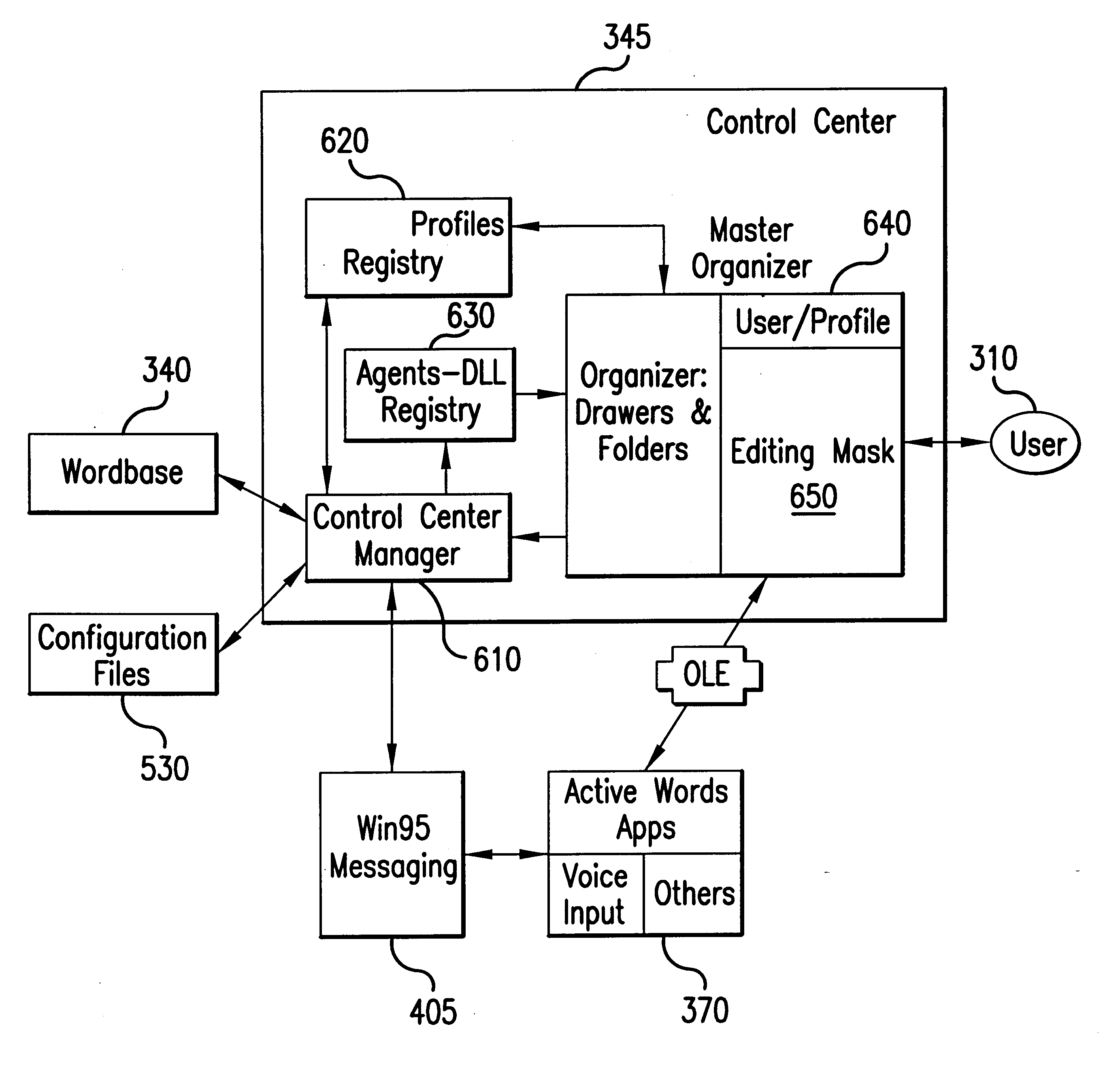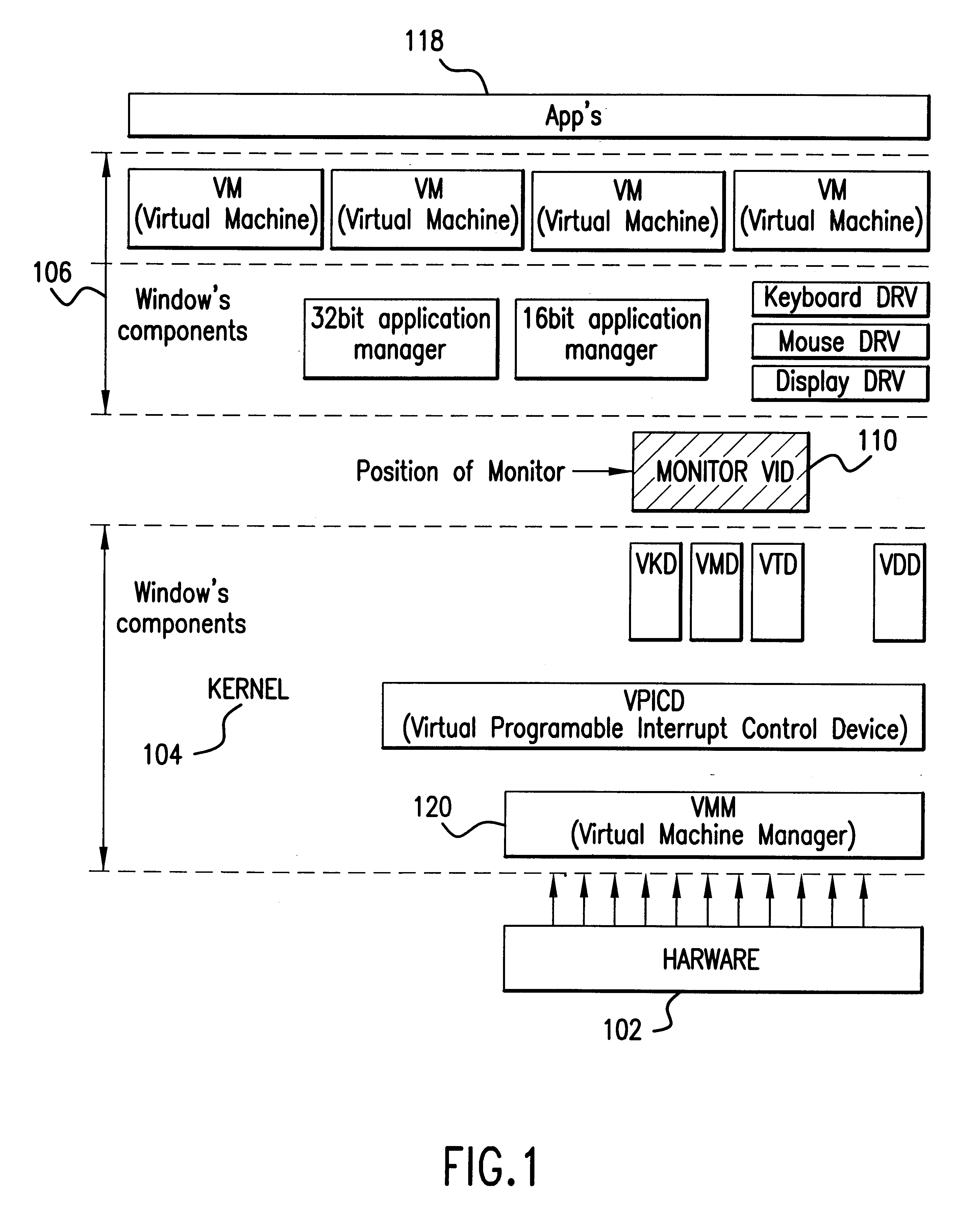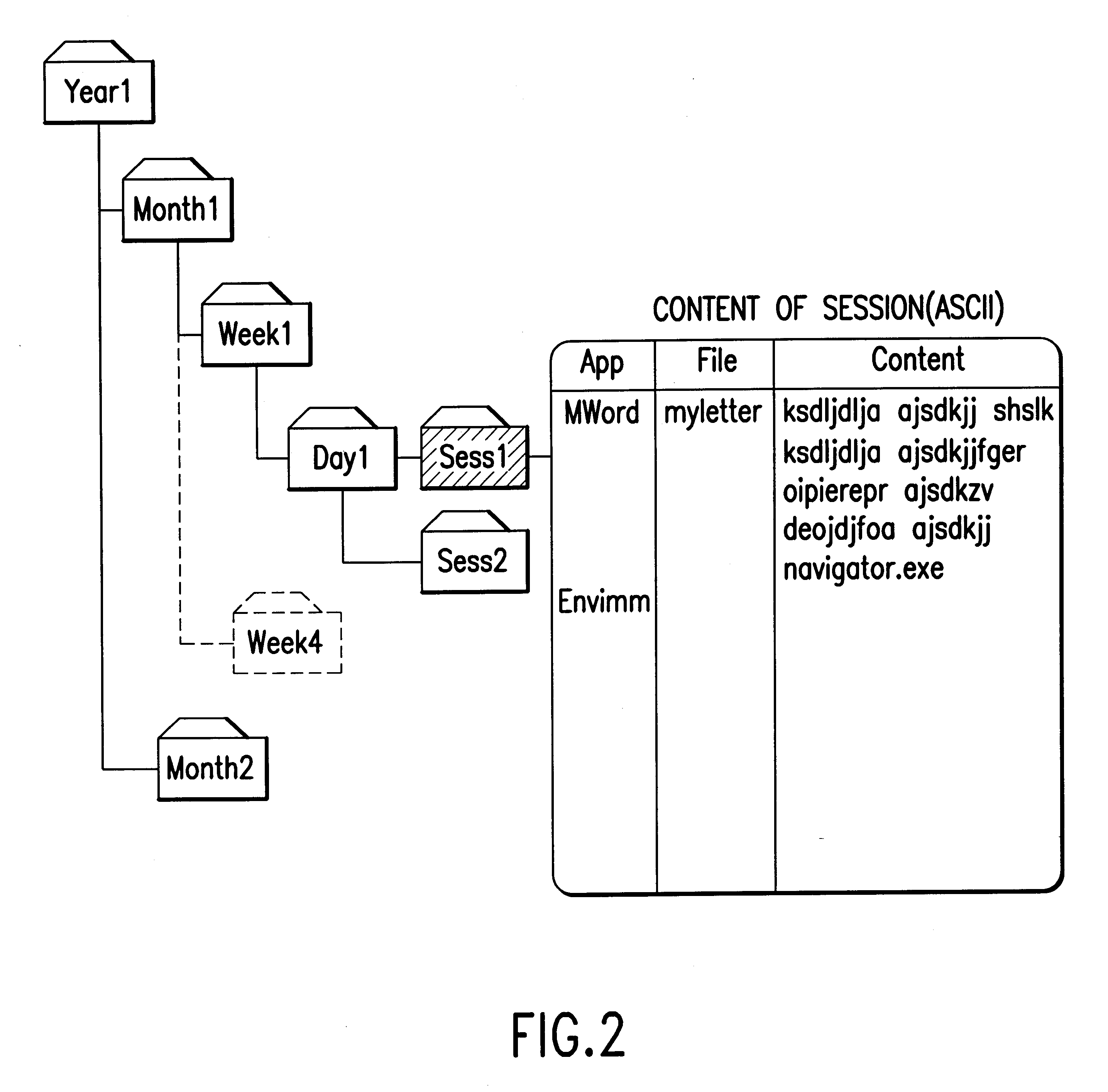Semantic user interface
a user interface and semantic technology, applied in the field of semantic interface for a computer system, can solve the problems of turning simple tasks that are often repeated into tedious, affecting the user experience, and typically inaccessible features and functions for the computer operator
- Summary
- Abstract
- Description
- Claims
- Application Information
AI Technical Summary
Benefits of technology
Problems solved by technology
Method used
Image
Examples
example 2
Text Substitution Services--Content Service
A user can designate "evp" as a code word for a service script that substitutes "E.V.P." in the text string. The user may also use "evpe" ("e" as a suffix for expanded form) as the code word for "Executive Vice President". He can designate any number of such expansions using any nicknaming logic that he finds mnemonically convenient, such as evp / evpe, ovp / ovpe, ceo / ceoe, coo / cooe, if he favors suffixes, or alternatively, evp / eevp, ovp / eovp, ceo / eceo, coo / eceo, if he favors prefixes.
The user has complete freedom to create a vocabulary of action words. His ability to use any number of dual words to activate a single service script can free himself from remembering which word to use. Here is an example of an approach a user could take. To activate the dialer (Example 1), he can assign three dual words to that one service script--say "dial," "dialer," and "phone. That way, whenever he wants to execute that script, he can guess an obvious word; ...
example 3
Formatted Substitutions of any Sort and Length--Content Service
A user may type, for example, "nad" as an action word he has designated for his formatted name and address. Thus, typing "JDoe nad" results in the following information being displayed on the screen:
John Doe
1212 Maple Street
Apartment #45
Big City, Big State 00000
example 4
In-place Text, Arithmetic and Transformation Services--Content Service
In an outgoing E-mail message, the user types "134.times.16.7==." The user has designated "==" (two equal signs) as his code word for performing in-place arithmetic on the preceding expression. In this case the present invention will analyze the "134.times.16.7, then calculate the result (using an agent), then erase the "134.times.16.7==" from his text, and finally, substitute the result value, 2237.8 for the original expression.
To add 3 to this value, he would follow the "2237.8" with "p3==", where p represents "plus," and that value would be erased and 2340.8 would be substituted as the new result. And so on, until he has achieved the result he needs. There is always the possibility to include a powerful third party math agent to perform complex calculations. As should be readily apparent, the present invention allows every word, letter, symbol to be an action.
Using the above example, the user could follow the r...
PUM
 Login to View More
Login to View More Abstract
Description
Claims
Application Information
 Login to View More
Login to View More - R&D
- Intellectual Property
- Life Sciences
- Materials
- Tech Scout
- Unparalleled Data Quality
- Higher Quality Content
- 60% Fewer Hallucinations
Browse by: Latest US Patents, China's latest patents, Technical Efficacy Thesaurus, Application Domain, Technology Topic, Popular Technical Reports.
© 2025 PatSnap. All rights reserved.Legal|Privacy policy|Modern Slavery Act Transparency Statement|Sitemap|About US| Contact US: help@patsnap.com



